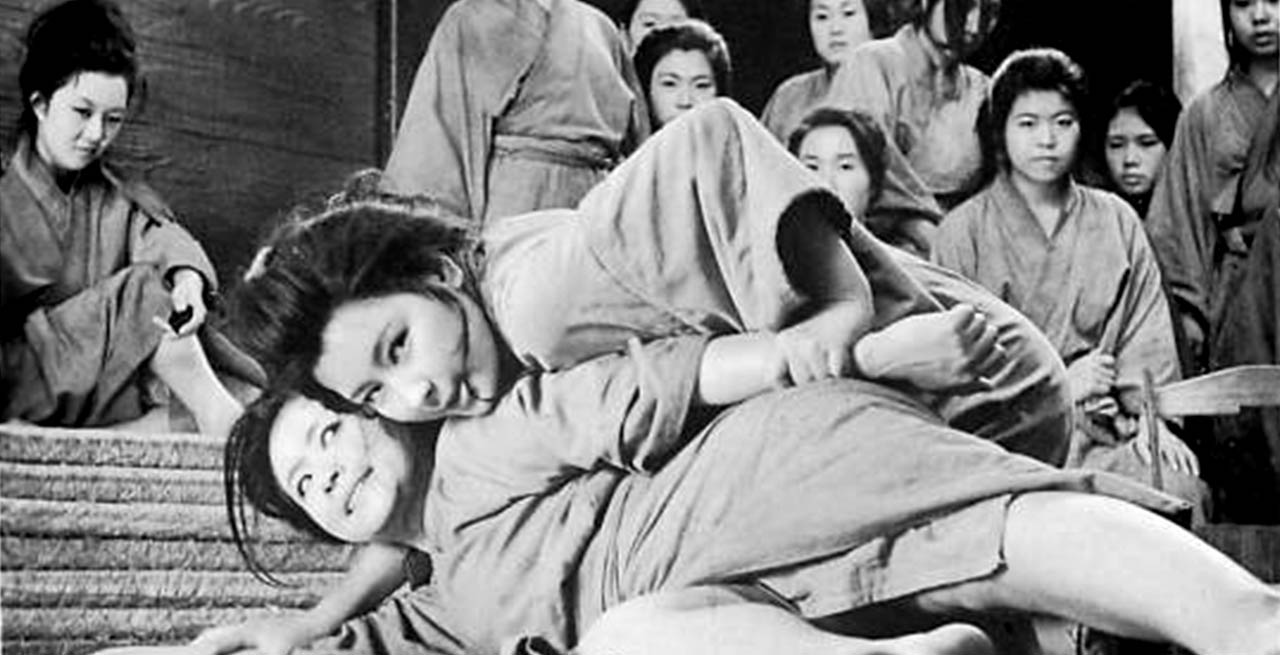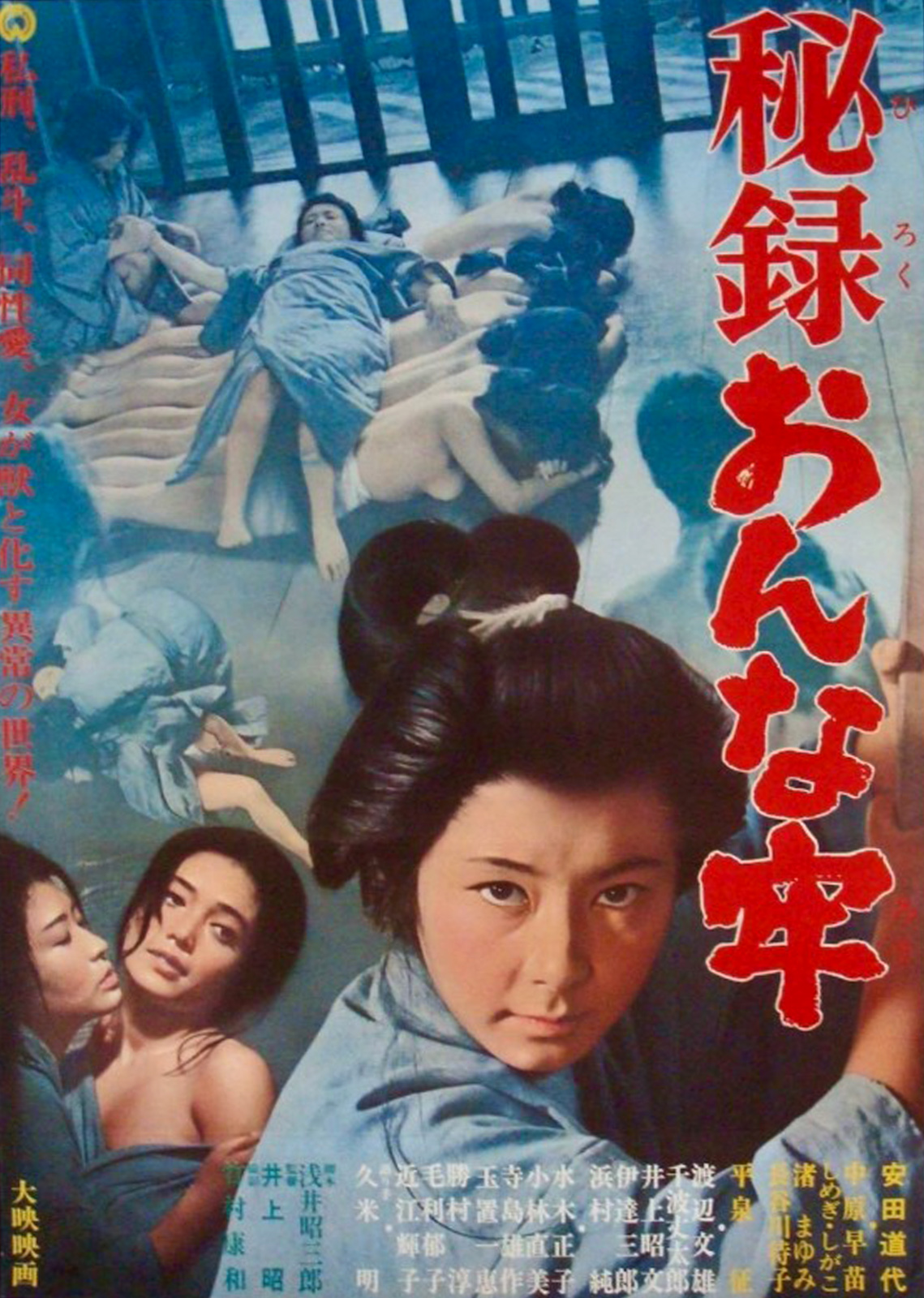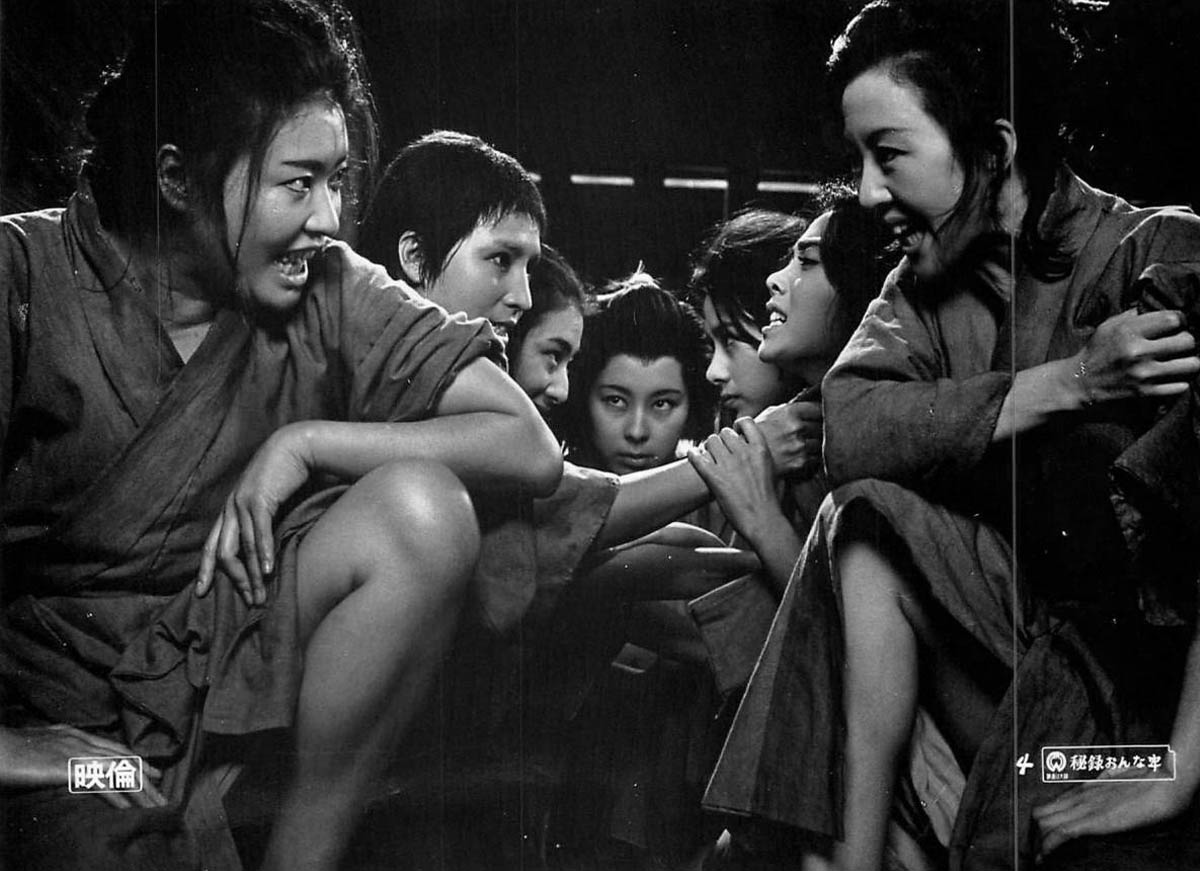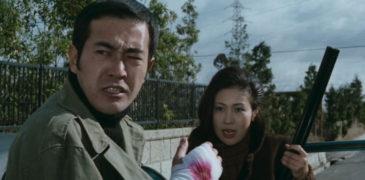
Despite being one of Japan’s biggest film studios throughout the late 40s and 50s during the golden age of Japanese cinema, Daiei was struggling by the mid-60s and had to slash budgets for their productions. This eventually led to a merger with Nikkatsu in 1970, followed by bankruptcy in 1971. Somewhat overlooked is Daiei’s 1968-1969 period where they started to focus on exploitation films and could be considered as their own equivalent to “pinky violence“. This era of exploitation, dubbed by Daiei as their “ero guro/unique historical drama” line, is largely defined by two film series: the Woman’s Secret series and the Kanto Woman series. The Woman’s Secret series kicked off this new line with a focus on historical-set exploitation films, the first being Secrets of a Woman’s Prison in 1968.


Because of how obscure this film is, Rob has outlined the plot below. If you want to avoid spoilers, skip down to the “Spoilers end here” tag below.
When Oshino (Michiyo Yasuda), a traveling entertainer, and her adopted father hear his master getting attacked, they rush to the scene of the crime. However, they are too late and Oshino catches only a brief glimpse of the attacker who has a scar on his cheek as he escapes. When the constables arrive they find Oshino and her father hunched over the body – with her father holding the murder weapon – and assume that they are the attackers. More interested in swift justice than the truth, the lawmen pay no heed to their protests of innocence and attempt to torture a confession from Oshino’s father, eventually leading to his death. Taking his death as an admission of guilt, Oshino is then imprisoned. Prisons at the time had large groups of women housed in a single cell with no privacy and it is a daunting prospect when Oshino arrives at her new home. Life inside the cell is a vicious hierarchy with the hot-headed Omatsu (Machiko Hasegawa) sitting at the top, demanding submission with the prospect of violence never far away.
After a thorough hazing, Omatsu makes sure that Oshino knows who’s the boss. Meanwhile, a young constable is frustrated with how the crime was investigated by his superiors and works in vain to reopen the case and clear Oshino’s name. During one of her fights with Omatsu, Oshino drops an unusual amulet when she is thrown to the floor. Seeing this, Omatsu is suddenly filled with panic and rage, seemingly making it her new mission to try and kill Oshino. It is revealed that Omatsu is actually the lover of the scar-faced man named Ushigoro (Akifumi Inoue) and that she has an identical amulet. She assumes that Oshino has stolen it and will use it to implicate her in Ushigoro’s crime.
Before she has the chance to take out Oshino, another prisoner desperate to escape manages to start a fire in the chapel. Soon the entire prison is an inferno, and the wardens have no choice but to grant the inmates a temporary release of three days (a common practice at the time in case of emergencies.) During this time, Oshino happens to encounter Ushigoro and confronts him; he quickly fights her off and makes his escape. In the meantime, Omatsu returns home and discovers that her amulet is intact, meaning that Oshino is actually her long-lost sister as they were given the amulets as children. When she learns of Ushigoro’s intention to kill Oshino, she rushes to defend her sister, eventually stabbing Ushigoro in order to save her.

Despite being Daiei’s first true exploitation film, Secrets of a Woman’s Prison starts off with a bang. After the usual narration of the Woman’s Secret series (which in this case explains the customs surrounding prisons in the Edo era), the audience is immediately greeted by the gruesome depiction of execution via decapitation in a prison yard, followed by a sequence showing the various gruesome torture implements that would have been employed by a prison in this period. The film proper then opens with a brief prologue showing how Omatsu became the head bitch via the violent domination of the former queen of the roost Otaki (Sanae Nakahara). Nonetheless, after the almost nonstop orgy of violence displayed in the first few minutes, the rest of the film fails to properly live up to the highs seemingly promised from the offset.
The bravery of setting such a large portion of the film in the single room of the cell has to be commended, though the film begins to run out of steam as Oshino eventually becomes accustomed to her surroundings. Any examination of prison life is strictly limited to the cell, meaning that all conflict and progression is firmly kept within the four barred walls. With little other than fights between the prisoners to provide any action, proceedings quickly become stale and repetitive. There is an attempt to provide some intrigue with the young constable working in the background to prove Oshino’s innocence but the storyline is more of a distraction and offers little to the overall plot. Secrets of a Woman’s Prison, nevertheless, is still capable of genuine acts of savagery: a particularly vicious sequence shows Oshino tied around the bars of the cell, with Omatsu pulling the rope to repeatedly smash her head against them. Fortunately, after the burning of the prison, the lost momentum is ignited again as the film shifts gears leaving its prison setting behind and focusing on a new thread of revenge and tragedy. Admittedly, the twist of Oshino and Omatsu being sisters is incredibly far-fetched, though it is enough to add an extra degree of depth to the final act, increasing the stakes of Oshino’s encounter with Uchigoro.
End of Spoilers

As with each entry in the Woman’s Secret series, the atmosphere is an integral aspect of the film, and with Secrets of a Woman’s Prison’s limited staging, it is more vital to the success of the film than ever. Director Akira Inoue takes advantage of the cramped conditions and renders the cell a tinderbox of pent-up aggression and frustration, with every character pushed to their emotional breaking point. The extremely oppressive atmosphere makes the audience feel at one with Oshino, and at times becomes borderline anxiety-inducing with the onslaught of antagonism from Omatsu, Otaki, and the other prisoners. Inoue further highlights the claustrophobia of the prisoners’ living conditions by often shooting scenes from the opposite side of the bars looking in; this also provides a certain voyeuristic aspect for the audience, building on the underlying sordid tones present. Surprisingly for a women in prison film, depictions of sexuality are almost non-existent. Perhaps due to the subgenre being in its infancy, the common tropes and audience expectations still hadn’t been set in stone. Whilst there is a brief suggestion of a burgeoning lesbian romance between two prisoners, it is never fully developed and is quickly forgotten in favour of violence.
Michiyo Yasuda brings a youthful and naïve fish-out-of-water personality to the character of Oshino, making her the perfect audience proxy in this alien world. She brilliantly conveys the deep emotional trauma caused by not only the constant antagonism from her cellmates but also the death of her father. Coupled with this sadness, she also has to show strength in the face of torment lest she becomes the cell punching bag. Opposing Michiyo Yasuda’s quiet role, both Machiko Hasegawa and Sanae Nakahara are large standouts in the first half of the film. As the two duelling rivals, their antagonistic chemistry is crucial to building an atmosphere of oppression surrounding the rest of the prisoners. Both actresses give their characters such large personalities that they dominate the cell – both figuratively and physically – and compliment each other perfectly: Hasegawa’s portrayal of Omatsu’s aggression is characterised by a brooding, threatening aura, and unpredictable outbursts of violence, whilst Nakahara’s Otaki counteracts this with a snarling, poisonous tongue.

Released in January 1968, Secrets of a Woman’s Prison is not only the first Japanese women-in-prison film but also one of the first in the modern subgenre as a whole, predating Jess Franco’s influential 1969 film 99 Women. As such an early film in the genre, and also one of Daiei’s first forays into exploitation cinema, Secrets of a Woman’s Prison carries the burden of exploring the limits of both the tastes of cinema audiences at the time as well as censorship. With exploitation cinema often delving into an arms race of extremity, it is perhaps unsurprising that its themes would be quickly outdone by other films in the coming years. Later that year, Teruo Ishii’s controversial Shogun’s Joy of Torture would take a similar exploitational look at punishment in historical Japan but would push the limits much further to great success.
Looking back nowadays with films like Female Prisoner# 701: Scorpion, Orgies of Edo, and Shogun’s Joy of Torture as high points within the same genre, Secrets of a Woman’s Prison almost feels redundant in comparison. With the genre ever-evolving, Daiei would revisit the historical prison setting three more times as part of the Woman’s Secrets series with Secrets of a Woman’s Prison 2, Island of Horrors, and Secrets of a Nagasaki Woman’s Prison – each more extreme than the last. Despite lacking the edge of its contemporaries by today’s standards, Secrets of a Woman’s Prison is still a solid entry in the women-in-prison subgenre and is a strong start for Daiei’s ero guro exploitation line. With its brave single-room setting and fraught atmosphere, the film provides a brilliant opportunity for its characters to shine with strong performances throughout.
More Film Reviews
When Toei’s pinky violence line first appeared in 1970 it was an unstoppable force, and throughout the early 70s, it showed little signs of slowing down. 1973 in particular was… What should be a fresh start for Laura (Christina Ricci) and her son Cody (Santini Barnard) soon becomes a trap. With the past they are running from catching up, and… Two tragedies combine with unforeseen consequences after Amanda retreats to the country to open an B&B following the death of her husband. With her unwilling daughter Karli in tow, misfortune… Upurga, Latvian director Ugis Olte’s first narrative full-length feature, skillfully blends elements from half a dozen iconic genre movies of the past decade. However, thanks to great writing, an ear… There are very few horror movies that linger in the brain well after viewing, like fine wine on the tongue, dragging your thoughts back over and over to replay it… READER WARNING: Ghosts starring in this review may contain an excessive amount of exploding glitter. Konnichiwa! Bonjour! What’s the story, bud!? Straight Outta Kanto here, bringing you a big fat…Female Convict Yakuza (1974) Film Review – Giving Pinky Violence the Middle Finger
Monstrous (2022) Film Review – The Past is a Relentless Pursuer
The Stranger (2022) – Indie Low Budget British Horror With A Bite
Upurga (2022) Film Review – Nature Can Kill You
Broadcast Signal Intrusion (2021) Film Review: Descending Into an All-Consuming Obsession
Sick Nurses (2007) Review – An Absolutely Outrageous EVENT of a Movie

Hi, I have a borderline obsession with Japanese showa-era culture with much of my free time spent either consuming or researching said culture. Apparently I’m now writing about it as well to share all the useless knowledge I have acquired after countless hours surfing the web and peeling through books and magazines.





